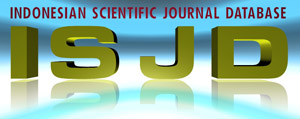PENGEMBANGAN MODEL STRUKTUR PENGENDALIAN INTERN BERBASIS MODAL SOSIAL UNTUK MENCEGAH KEBANGKRUTAN LEMBAGA PERKREDITAN DESA (LPD) DI BALI
DOI:
https://doi.org/10.23887/jish-undiksha.v5i1.8281Abstract
Abstrak Sebagai lembaga bentukan desa pakraman, selain memiliki fungsi bisnis LPD juga memiliki fungsi sosial untuk memajukan perekonomian desa pakraman beserta seluruh krama-nya. Fungsinya yang penting ini mengakibatkan LPD harus dihindarkan dari permasalahan keuangan yang dapat berujung pada kebangkrutan. Berbeda dengan lembaga keuangan lainnya selain mempergunakan tata aturan organisasi formal, LPD mempergunakan modal sosial yang dimiliki oleh desa pakraman sebagai basis aktivitas operasionalnya. Untuk itu, penelitian ini bertujuan untuk membangun model srtuktur pengendalian intern berbasis modal sosial yang dapat diterapkan pada seluruh LPD di Bali yang dibagi menjadi tiga tahapan penelitian. Pada tahapan pertama ini akan diinventarisir modal sosial apa yang dapat dimanfaatkan untuk memperkuat struktur pengendalian LPD dengan mengetahui, 1) alasan desa pakraman membentuk LPD, 2) hubungan antar para pemangku kepentingan di LPD, dan 3) bentuk penyertaan modal sosial dalam struktur pengendalian intern LPD. Penelitian ini dilakukan dengan metode penelitian kualitatif pada 18 LPD di seluruh kabupaten dan kota madya di Bali. Data dikumpulkan dengan wawancara, observasi partisipasi, dan studi dokumentasi yang selanjutnya dianalisis berdasarkan kerangka teoritik yang telah disusun sebelumnya. Hasil penelitian menujukkan bahwa 1) LPD didirikan berdasarkan instruksi penguasa supra desa sekaligus merupakan kebutuhan krama desa pakraman, 2) pola hubungan antar stakeholder berbasis modal sosial yang dilandasi ideologi Tri Hita Karana, serta 3) modal sosial yang berperan dalam aktivitas operasional sekaligus pelaksanaan struktur pengendalian intern LPD adalah trust, jaringan sosial, dan pranata sosial. . Kata kunci: Lembaga Perkreditan Desa, Model Struktur Pengendalian Intern, Modal Sosial, Tri Hita Karana, Kebangkrutan Abstract As an institution formed by Desa Pakraman, besides having a business function LPD also has a social function to promote the economy of Desa Pakraman and its members. This important functions derive LPD should be avoided from the financial problems that can lead to bankruptcy. Compared to other financial institutions, LPD is ruled by using the formal organization and importantly social capital belonged to Desa Pakraman as the basis of operational activities. Therefore, this study aims to develop a model of internal control structure based on social capital that can be applied to the entire LPD in Bali. This study is divided into three stages of research. In the first stage it will be inventoried what social capital can be used to strengthen the structures of LPD’s control by knowing: 1) the reason of Desa Pakraman in building an LPD, 2) the relationship among the stakeholders in LPD, and 3) form of social capital share in the LPD’s internal control structure. This research was conducted using qualitative method at 18 LPDs in all regencies in Bali. Data were collected through interviews, participatory observation and documentation study. It was then analyzed based on the theoretical framework that has been developed previously. The results showed that 1) LPD was established based on instruction of the ruler of the supra-villages as well as the need of Desa Pakraman, 2) the pattern of relationships among stakeholders was based on social capital with the ideology of Tri Hita Karana, and 3) the social capital involved in operational activities and the implementation of internal control structure of LPD is trust, social networks, and social institutions. Keywords: Lembaga Perkreditan Desa (LPD), model of internal control structure, social capital, Tri Hita Karana, bankruptcy.Downloads
Issue
Section
Articles
License
Authors who publish with the Jurnal Ilmu Sosial dan Humaniora agree to the following terms:
- Authors retain copyright and grant the journal the right of first publication with the work simultaneously licensed under a Creative Commons Attribution License (CC BY-SA 4.0) that allows others to share the work with an acknowledgment of the work's authorship and initial publication in this journal.
- Authors are able to enter into separate, additional contractual arrangements for the non-exclusive distribution of the journal's published version of the work (e.g., post it to an institutional repository or publish it in a book), with an acknowledgment of its initial publication in this journal.
- Authors are permitted and encouraged to post their work online (e.g., in institutional repositories or on their website) prior to and during the submission process, as it can lead to productive exchanges, as well as earlier and greater citation of published work. (See The Effect of Open Access)


.png)
.png)













